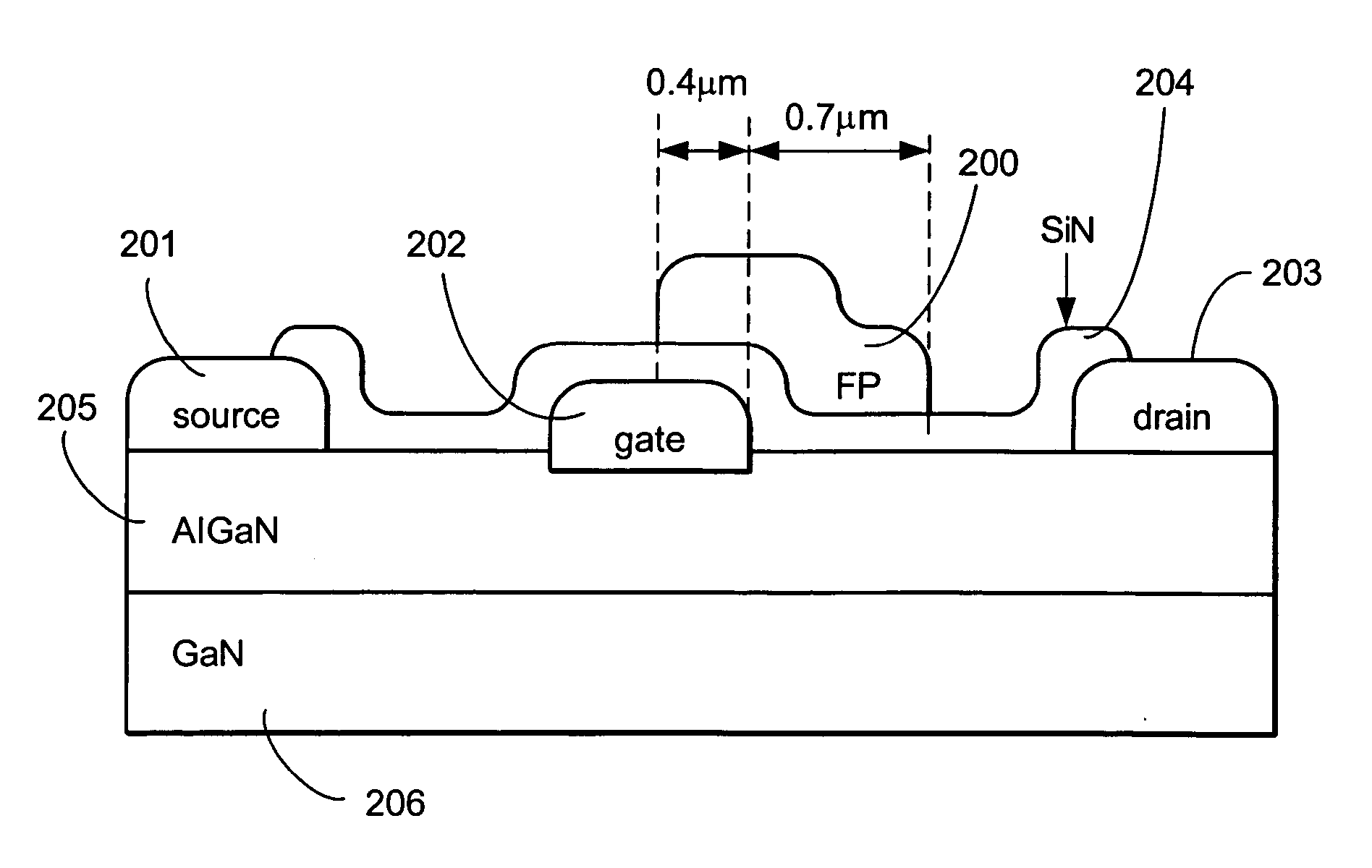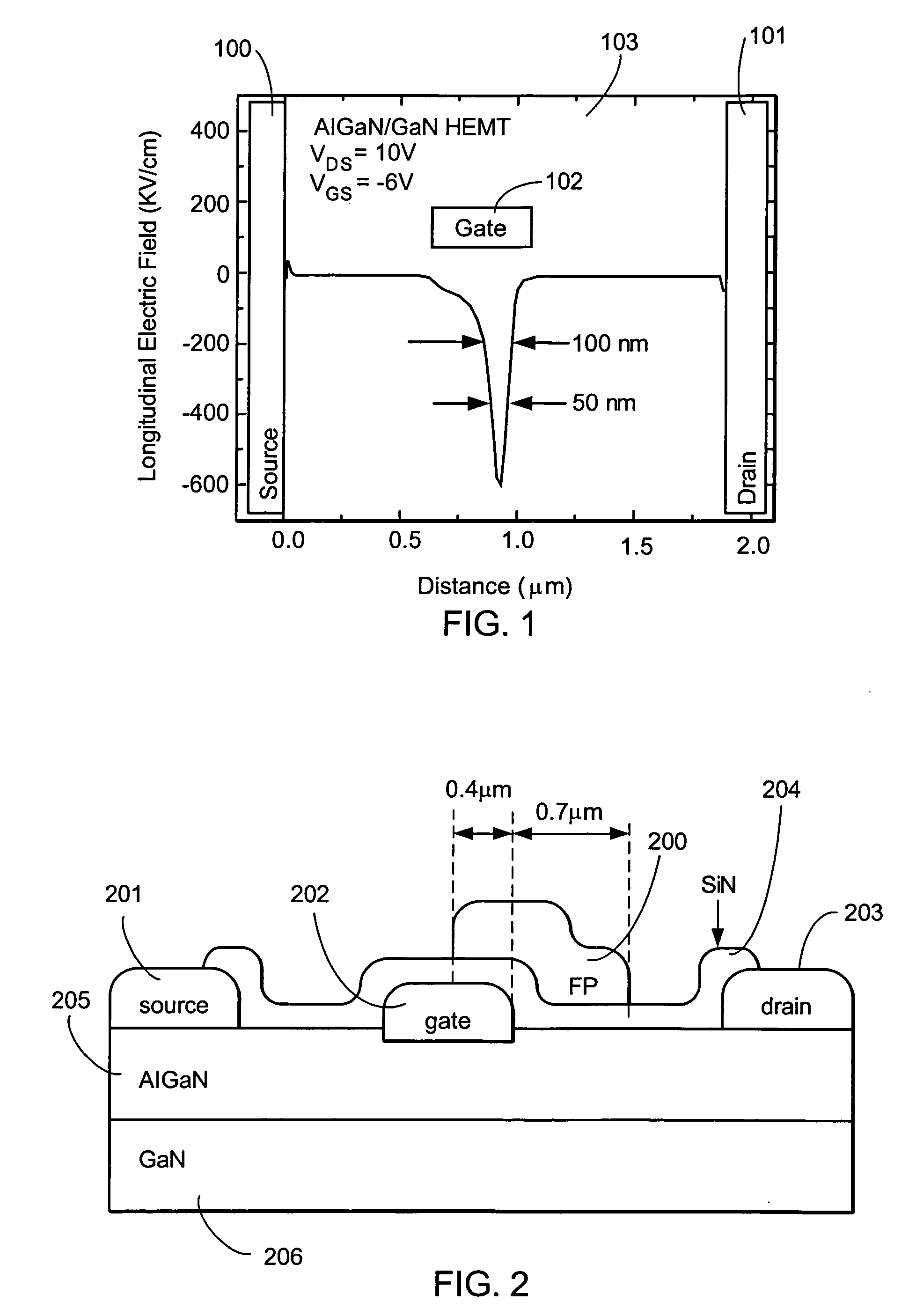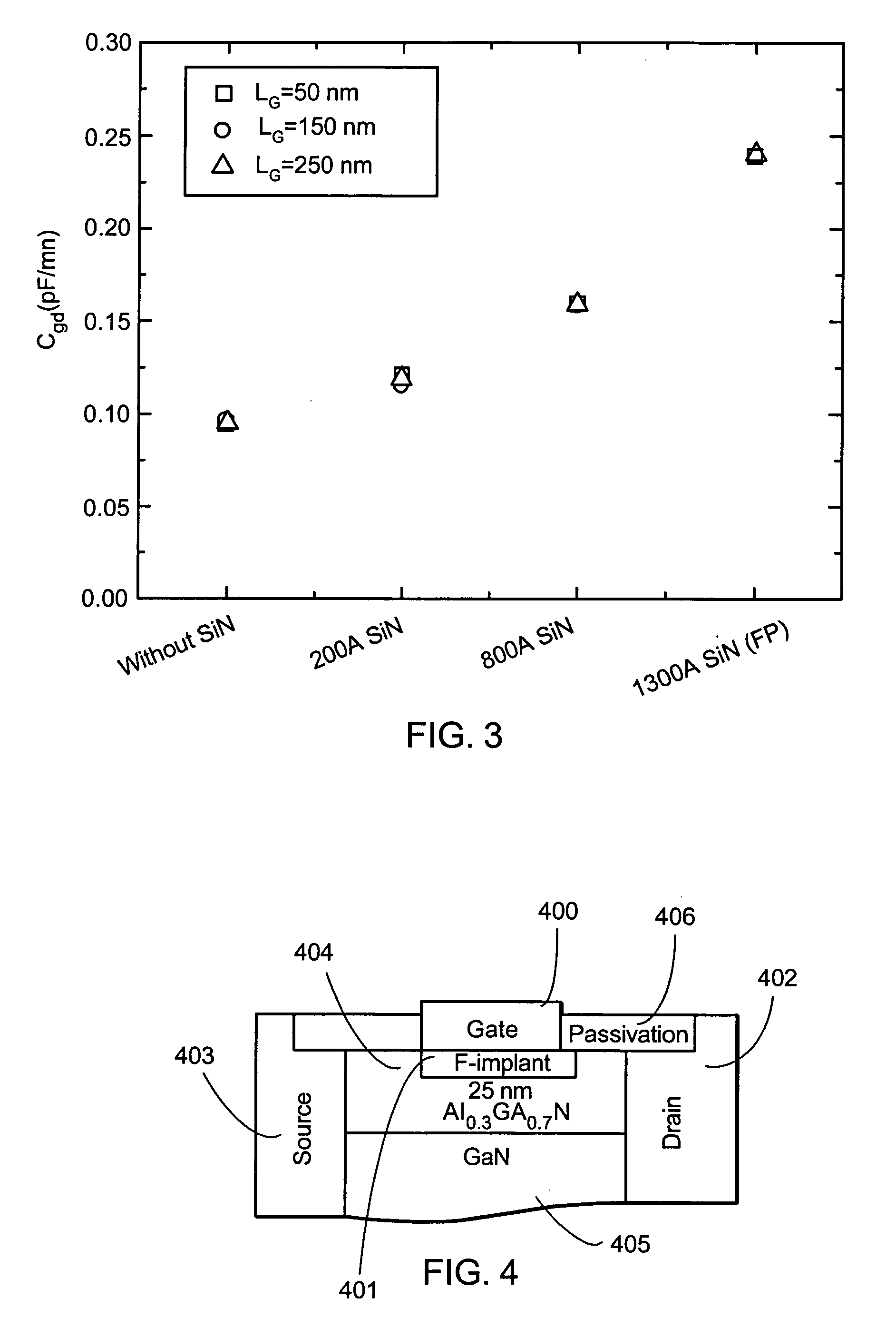Methods to shape the electric field in electron devices, passivate dislocations and point defects, and enhance the luminescence efficiency of optical devices
a technology of electron devices and fluorine treatment, applied in the direction of semiconductor devices, basic electric elements, electrical equipment, etc., can solve the problems of increased leakage current, reduced breakdown voltage, and not suited to high-power applications, so as to increase the output power of the semiconductor device, reduce the leakage current of the gate, and increase the breakdown voltage
- Summary
- Abstract
- Description
- Claims
- Application Information
AI Technical Summary
Benefits of technology
Problems solved by technology
Method used
Image
Examples
Embodiment Construction
[0060] In the following description of the preferred embodiment, reference is made to the accompanying drawings which form a part hereof, and in which is shown by way of illustration a specific embodiment in which the invention may be practiced. It is to be understood that other embodiments may be utilized and structural changes may be made without departing from the scope of the present invention.
[0061] Overview
[0062] Treatments with fluorine compounds, including exposure to a plasma comprising fluorine containing compounds, have been used to locally reduce the electron concentration in nitride-based semiconductors, and shape the electric field profile in electron devices. The use of this electric field shaping technology, which can be employed in 1, 2, or 3-dimensional manner, in AlGaN / GaN HEMTs, allows a reduction in the peak electric field in the channel, which increases the breakdown voltage and decreases the gate leakage in these devices, without harming the high frequency p...
PUM
 Login to View More
Login to View More Abstract
Description
Claims
Application Information
 Login to View More
Login to View More - R&D
- Intellectual Property
- Life Sciences
- Materials
- Tech Scout
- Unparalleled Data Quality
- Higher Quality Content
- 60% Fewer Hallucinations
Browse by: Latest US Patents, China's latest patents, Technical Efficacy Thesaurus, Application Domain, Technology Topic, Popular Technical Reports.
© 2025 PatSnap. All rights reserved.Legal|Privacy policy|Modern Slavery Act Transparency Statement|Sitemap|About US| Contact US: help@patsnap.com



